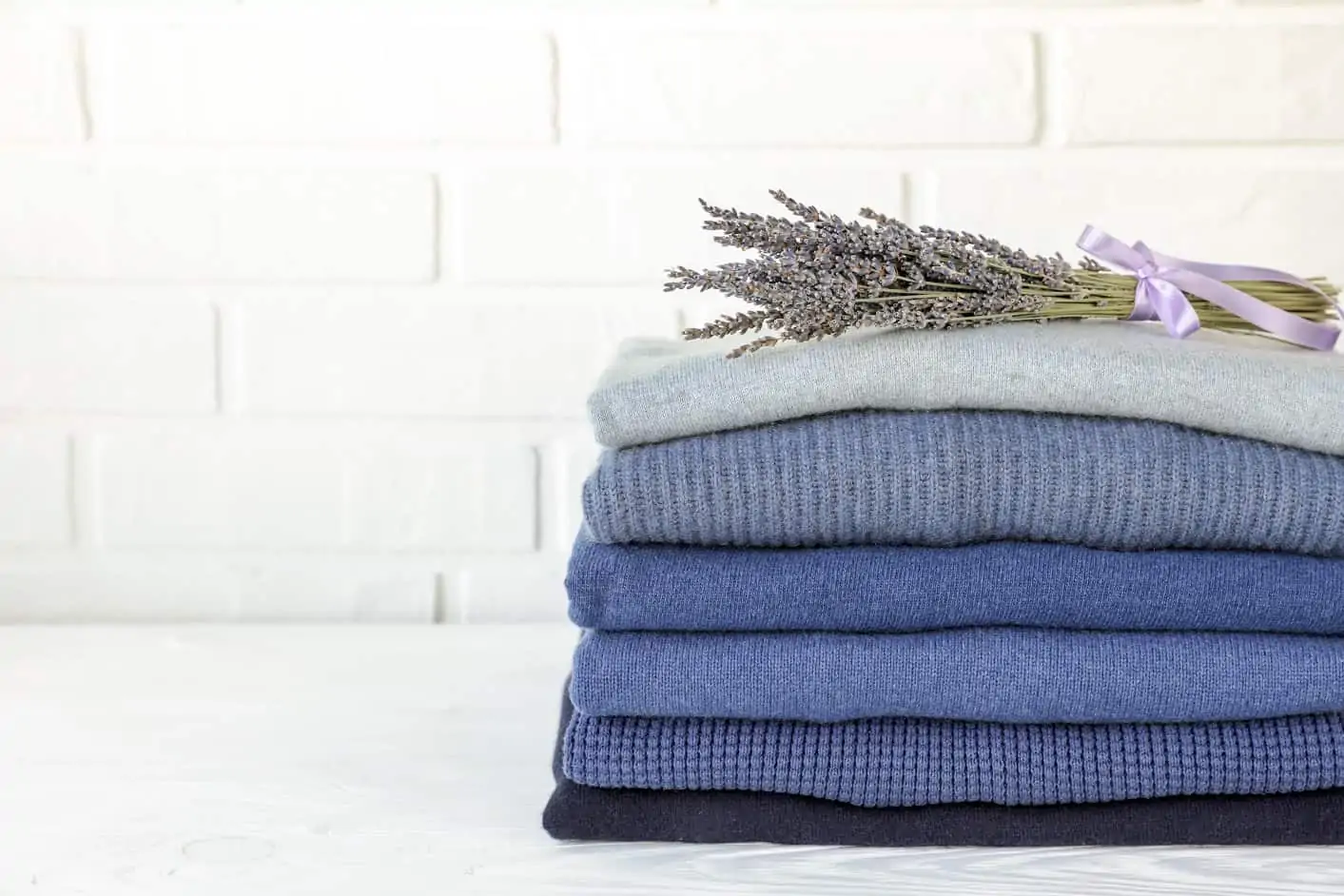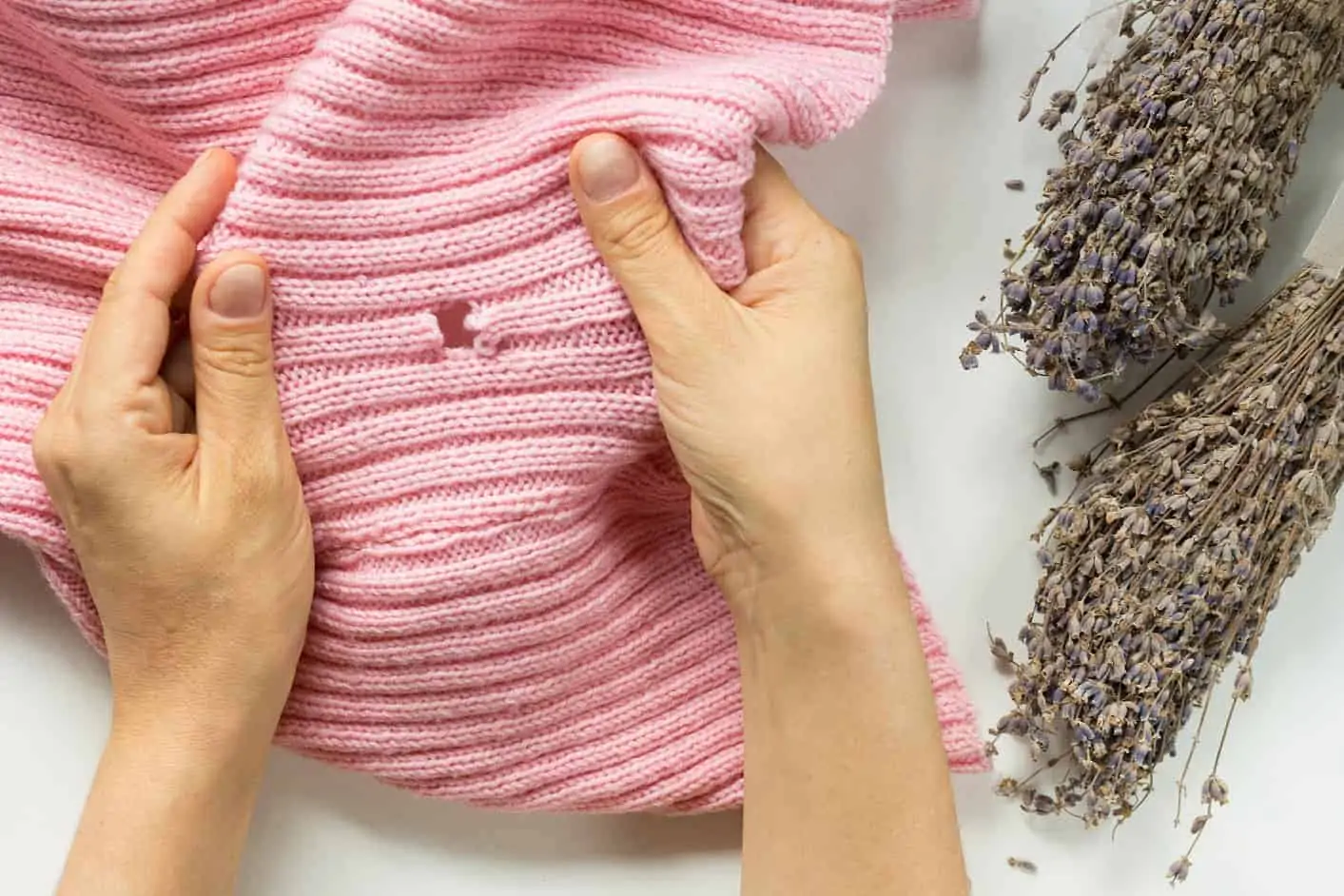
Moth breeding season is in full swing, which can spell disaster for owners of wool clothes or luxury wool items such as our knitted socks or our light grey throw. Moths breed and lay eggs from March to September leaving a flurry of destruction in their wake.
There are several species of moth that feast on textiles during the spring and summer months. The common clothes moth, or Tineola bisselliella, is the most ferocious.
Clothes moths can lay up to 100 eggs at a time, and the larvae that emerge 4 to 10 days later are rather ravenous. They’ll eat everything from wool, cotton, linen, silk, leather and synthetic fabrics to feathers, fur, hair, paper and dust on their quest to maturity.
You don’t have to suffer a moth infestation in silence, however. You can take the following steps to stop your favourite alpaca wool scarf or turquoise throw blanket from becoming moth food.
Know your enemy
Identifying a moth infestation is the first step to solving your problem. Wearing Woad offers their advice on how to determine which moth is munching on your beloved wool collection:
“Wool moths look very similar to grain moths, so if you have lots of tiny moths hanging around, but not in the wool, it could be grain moths instead. Wool moths are also not attracted to light, so they will fly around the middle of a room and not head toward the lights on the ceiling or side tables. If your little moths are attracted to light, they are probably not wool moths (but it’s worth checking the wool anyway).”
Remember it’s not adult moths that cause the brunt of the damage – although spotting adult moths early could help you to stop your moth problem in its tracks – so be sure to identify their larvae. Look for small holes in your wool garments to pinpoint the source of infestation.
Clean up your act
Moths and their larvae love worn clothes. In fact, it’s the keratin that’s left behind courtesy of your sweat, hair and skin cells that they’ll be chowing down on. Keratin is already found in natural fibres like wool and silk providing an extra tasty treat for these hungry critters.
Cleaning your clothes and the wardrobes, cupboards or drawers that store them should therefore be your first port of call. With a good wash, you can remove the excess keratin that’s so attractive to moths.
Even clothes that were clean but haven’t been worn since winter should be given a once over as dust is a source of keratin too.
Freezing and ironing your clothes has also been found to kill moths and their larvae.
Up your storage savviness
Creating a barrier between your clothes and the moth is another easy way to prevent infestation.
Clothes bags aren’t just cheap and convenient storage solutions, they’re an effective safeguard for wool items. They’ll also protect your clothes from dust to reduce the risk of becoming moth food.
Be sure to only store winter woollies that are clean and infestation free. You should also use storage bags that are made from breathable fabric to give natural fibres the space to breathe and stay super fresh.
Use natural mothballs
The old-fashioned mothballs that you grew up with may have been outlawed long ago – chemically-laden mothballs containing naphthalene or paradichlorobenzene were found to be damaging to health and were therefore banned – but there are natural mothball alternatives that provide great results without the risk.
Moths don’t like certain fragrances, which means a quick spritz or the hanging of a homemade, all-natural mothball can repel adult moths and prevent them from using your favourite wool items as an egg-laying site.
Lavender, rosemary, laurel and patchouli have all been found to be effective moth repellents.
Prevent instead of cure
Introducing a new wool item – especially a second-hand one – can sometimes be risky business when it comes to moth infestation. When adding another garment to your collection, inspect it carefully to ensure it isn’t already home to a growing moth family.
To prevent further infestations, keep your wool and closet areas clean. Read our wool care tips to ensure your wool stays pristine and moth-free all year round.
Images: Victoria Kurylo , Tatiana Foxy / Shutterstock.com
